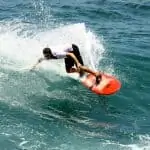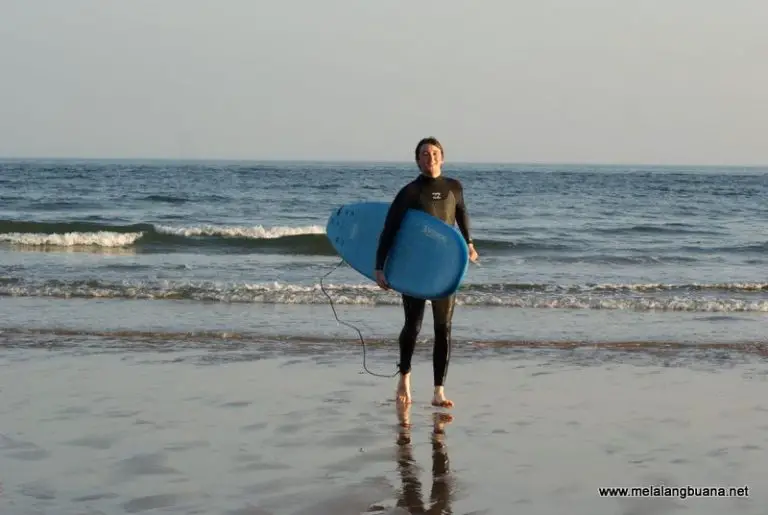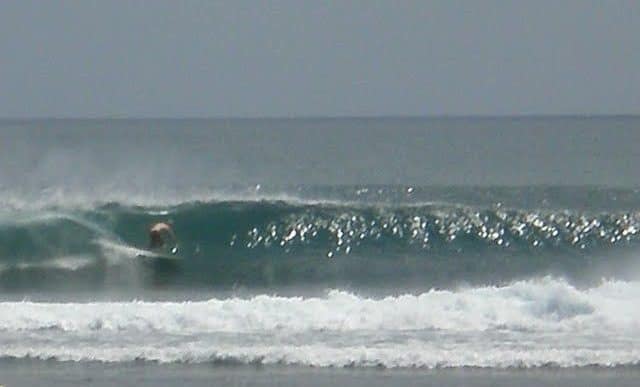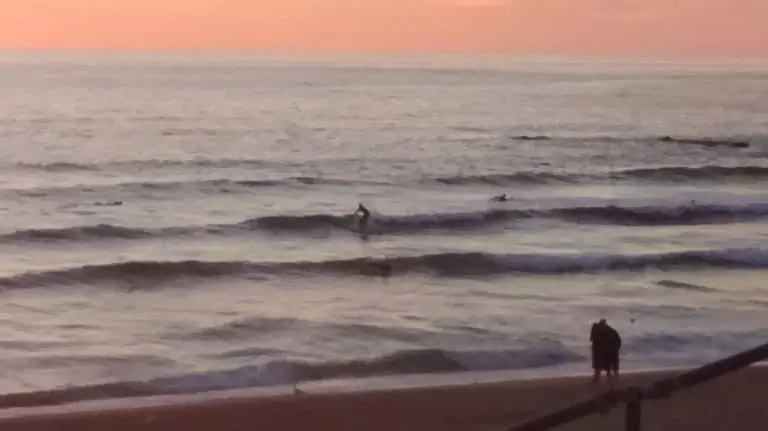5 Reasons Why It is Harder to Ride a Big Wave Than a Small Wave
Riding waves is no easy task and things change constantly with no two waves ever being the same.
There are also some major differences in surfing big and small waves.
So, to give an answer, here are 5 reasons why is it harder to ride a big wave than a small wave:
- Big waves are scary as hell
- The bigger the waves, the bigger the risks
- Big surf is only for athletes
- Paddling out into the big stuff can be impossible
- Big waves move at lightning speed
Now, let me explain each in a little more detail to show you exactly what I mean about the difference between these two types of waves.
Big waves are scary as hell
There’s no denying it, even from the world’s best big wave surfers, big waves are just plain old scary monsters.
When you paddle out to surf big waves, you immediately get the feeling of what you are up against with the sound, the movement, the height of the waves and just the general energy in the sea.
As this is such an alien environment for humans, it can take years for surfers to get used to this kind of feeling.
Flight, Fight or Freeze
For many, fear will just take over the body and put them into a flight response, or worse – freeze! I know I am terrified in big surf and often experience the latter, even after years of trying to push myself into bigger waves the fear just never goes.
Trying to paddle for a wave and hurl yourself over the edge of a wall of water the size of a house will never be a natural thing for your body to comprehend, and it often responds by either seizing up or just telling you to turn the other way.
Actually catching a big wave still leaves the rider with the task of making it down the face, which is an altogether different challenge since the bigger the wave, the faster you will be traveling down it.
This therefore requires quicker reactions and more attuned physical senses, which again only come with practice and time.
Adrenaline
Added to the above is the adrenaline that will be pumping around your body when you are out in big surf.
No matter how much you might be able to convince your mind that what you are doing is OK, your body’s physical response will always be to start the adrenaline pumping. This might change over time, but it’s still hard to control such a delicate action as riding a wave when
I challenge you to watch the GoPro video below of a surfer getting caught out in large surf at Todos Santos in Mexico and not feel even a little bit uncomfortable. Add in the fact that GoPros make even the biggest of waves look about half their actual size and you start to see just what a challenge surfing waves of this size is.
The bigger the waves, the bigger the risks
The risks of riding bigger are much more heightened than they are with smaller waves. This is because of the raw power and intensity of big surf being so much more than small waves.
Far From Shore
Drowning is a definite possibility in bigger surf because of where the waves break. Bigger waves tend to break much further from shore and therefore in much deeper water.
This has several main risks attached to it. The first being that, if something goes wrong, you still have to find a way to get back in to shore.
Unlike in small waves where you can pretty much hop onto the sand, big waves are often half a mile or more from shore, meaning that a surfer injured in heavy surf will need to find their way back in.
The further out to sea, the deeper the water as well. This means that big wave surfers can often find themselves trapped underwater with a long swim back to the surface. This kind of swimming is challenging at the best of times, but is all the more challenging of having what feels like the force of a building collapsing on top of you!
Power
Bigger waves are also more powerful, making it much easier for them to break your board or even your body!
Most surfboards are broken in big surf since a big wave landing on a surfboard can break it clean in half. This means that surfers have to choose their waves carefully in order to avoid getting a wave on the head, as can often happen.
Some big waves can also break in shallower water, like the Banzai Pipeline on Oahu’s North Shore in Hawai’i. This is the premier surf spot in the world for professional and advanced surfers, but it comes with the caveat of breaking over coral reef often in shallow water.
The clip below shows the reef under the Pipeline surf break at the start, with the rocks clearly visible and not much below the surface.
Big surf is only for athletes
The risks involved in surfing bigger waves mean that only the super fit or athletes should go out in them.
Because of the distance big wave surfers often need to paddle, and the lung capacity needed to withstand the wipeouts and hold-downs, big waves are far more physically demanding to surf than small waves.
As we’ve touched on a above, big waves can break way out to sea, meaning a long paddle. They can also break over a much bigger area, with the ‘line up’ shifting with every set. Bigger waves frequently break wide of the usual spots, so it makes for an unpredictable and bigger than usual playing field.
The lung capacity needed for surviving bigger waves is also in the realm of athletes since you cannot simply rock up and expect to be able to handle a wipeout on a big day.
Bigger waves will hold surfers down for a long time with little warning, meaning that they have to be ready to hold their breath at any moment, even when they are exhausted from all the paddling and surfing they’ve been doing until that point!
The video below shows professional surfers going through breath holding training to prepare for big surf. This shows just how seriously you need to take riding big waves if you want to do it properly.
Paddling out into the big stuff can be impossible
Big wave surf spots often have a paddle from hell to get out into the line up. Many have a wave called a ‘shorebreak’ where a wave at the same spot unloads onto the shoreline, breaking in almost no water. Although this isn’t the main attraction, surfers still need to get past it, with serious consequences for messing this up.
The harrowing video below shows just how hard it can be to paddle out into big surf when a shorebreak is involved. This was taken at the world-famous big wave spot, Waimea Bay, once again in Hawai’i.
In fact, so infamous is this spot that even the best professional surfer of all time, Kelly Slater, told a story of failing to get out into the surf on a huge day there a few years ago.
The currents and rips out in the surf on bigger days are also a major challenge. Having a current running against you when trying to get out on a bigger day just adds to the
On top of that, sometimes the currents and heavy waves just pin surfers back and push them into the rocks.
Big waves move at lightning speed
Bigger waves also travel faster than smaller waves, giving you less time to react and get in position.
When these waves appear on the horizon, it means that you will have a lot more ground to cover in less time than when surfing in small waves.
And on top of that, you will also be tired, scared and feeling everything else that we’ve covered above!
Seeing a wall of water moving towards you at breakneck speed means your reaction times need to be faster out in big surf, whereas the experience of riding smaller waves is much more relaxed and fun.




